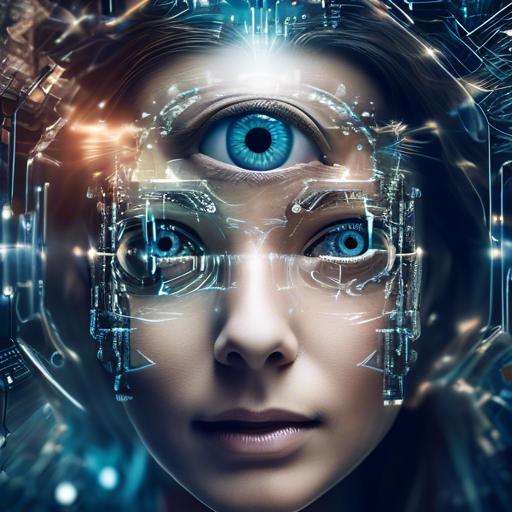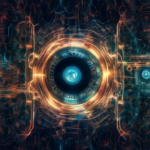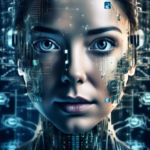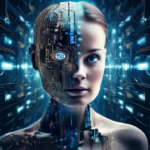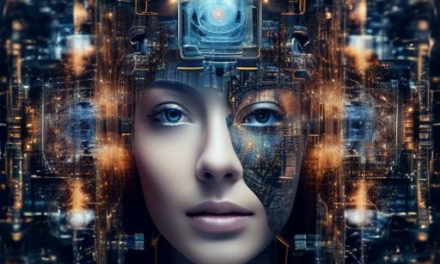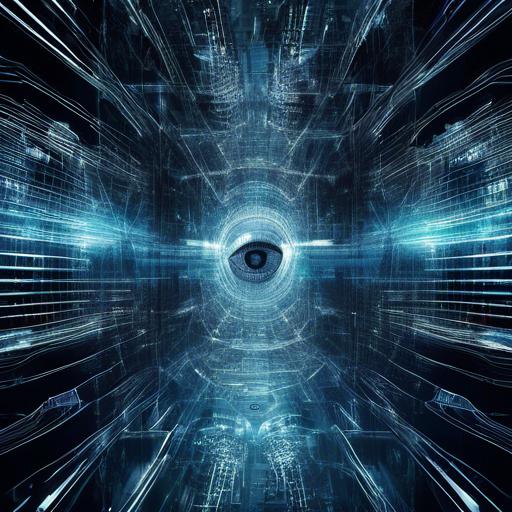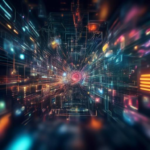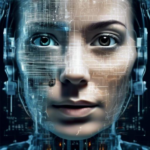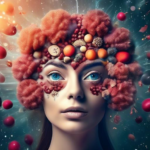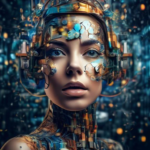Imagine, for a moment, a world where inspiration meets innovation, and the canvas of creativity knows no bounds. A place where artists aren’t limited by the constraints of time and skill, but are instead empowered by an intelligent partner, tirelessly bringing visions to life. Welcome to the era of AI image generation—a realm where algorithms don artist’s robes, and pixels dance to the tune of deep learning.
As we stand at the cusp of a visual renaissance, it’s not just about pretty pictures or futuristic fantasies. AI image generation is transforming industries, reshaping narratives, and redefining creativity itself. From the breathtakingly surreal to the impeccably realistic, these digital maestros are pushing the envelope of possibility, inviting us all to ponder, dream, and ask—what’s next?
Join us on this riveting journey as we explore the cutting-edge advancements, the ethical terrains, and the boundless future of AI-driven art. Let’s dive into a world where the next masterpiece might just be a click away, and the only limit is the edge of our imagination.
Table of Contents
- Exploring the Evolution of AI Image Creators
- The Technology Behind the Magic: Understanding Neural Networks
- Current Capabilities and Limitations of AI Image Generation
- Diving Into Ethical Considerations and Challenges
- Harnessing AI for Creative Industries: A New Paradigm
- Leveraging AI Images for Enhanced Marketing Campaigns
- Future Innovations: What to Expect from AI Image Generators
- Human-AI Collaboration: Merging Creativity with Computation
- Practical Tips for Incorporating AI Image Tools into Your Workflow
- Wrapping Up
Exploring the Evolution of AI Image Creators
The journey of AI image creators has been nothing short of revolutionary. From early attempts at basic pattern recognition to highly sophisticated neural networks capable of generating lifelike images, the evolution has been marked by groundbreaking advancements. It’s worth taking a moment to appreciate how far we’ve come and to speculate on the incredible possibilities ahead.
Initially, AI systems were limited to rudimentary tasks like identifying objects or basic image editing. However, the advent of **Generative Adversarial Networks (GANs)** transformed the landscape significantly. GANs consist of two models—the generator and the discriminator—competing against each other to improve the quality of generated images. This competition results in output that, at times, is indistinguishable from real photos.
- Basic Recognition: Identifying objects and simple patterns.
- GANs: Creating highly realistic images through internal competition.
- Art Creation: Generating entirely new and imaginative artwork.
AI creators are not just confined to producing realistic images. Today, they are venturing into more abstract and creative territories. Artists and designers are harnessing these tools to push the boundaries of traditional art forms. Whether it’s creating surreal landscapes or dynamic interactive pieces, AI is becoming a valuable co-creator in the artistic process.
As we look to the future, several exciting trends are emerging:
- Style Transfer: Transferring artistic styles from one image to another seamlessly.
- Interactive AI: Allowing users to specify detailed aspects of the generated image.
- Real-Time Generation: Creating images on-the-fly for instant feedback and refinement.
| Stage | Capabilities |
|---|---|
| Early AI | Simple pattern recognition |
| GAN Revolution | Highly realistic images |
| Current Trends | Art creation, style transfer |
Through each evolutionary step, AI image creators continue to break new grounds. The future holds limitless potential, with continuous innovations pushing creative boundaries even further. One can only imagine what the next chapter will bring in this ever-evolving field.
The Technology Behind the Magic: Understanding Neural Networks
Neural networks are the heart and soul of today’s AI image generation, mimicking the human brain’s complexity and prowess in processing visual information. **These intricate systems** consist of interconnected nodes, or neurons, arranged in layers. Each layer has a specific role, from recognizing edges and textures to understanding more complex patterns and features.
Let’s delve into the mechanics: **the neural networks** start with the input layer, where raw data, such as pixels from an image, are first processed. This data is then fed through one or more hidden layers, which perform a series of transformations. The neurons in these hidden layers apply mathematical operations—think of them as tiny calculators that fine-tune the input data. By the time the data reaches the output layer, it has been refined into a recognizable image or has informed the generation of a new one.
One of the most exciting advancements is the evolution of Generative Adversarial Networks (GANs), a two-pronged approach where one network generates images (the generator) and another evaluates them (the discriminator). **GANs create a feedback loop:**
- The generator creates an image.
- The discriminator evaluates whether the image looks real or fake.
- The generator adjusts its process based on the discriminator’s feedback.
This iterative process continues until the generator produces images indistinguishable from real ones.
To give a better perspective, here is a comparison of traditional and neural network-based image generation:
| Traditional Methods | Neural Networks |
|---|---|
| Rule-based algorithms | Learn from data |
| Fixed features and rules | Adaptive and self-improving |
| Limited complexity and detail | High complexity and detail |
Neural networks continually evolve, learning from vast datasets to enhance their capabilities. **Deep learning**, a subset of machine learning, allows for multi-layered networks (hence the term “deep”) that can process extraordinarily complex data and generate more nuanced images. As technology progresses, these networks will become more efficient, producing stunningly realistic images at a faster rate, pushing the boundaries of what’s possible in AI image generation.
Current Capabilities and Limitations of AI Image Generation
The current capabilities of AI image generation stretch the boundaries of what we once believed possible in digital creativity. Leveraging state-of-the-art deep learning algorithms, AI systems can now produce highly realistic images from mere text prompts, enabling anyone to visualize their ideas with unprecedented ease. **Generative Adversarial Networks (GANs)** and **Variational Autoencoders (VAEs)** are at the forefront, continuously evolving to refine image quality and coherence.
- Diverse Style Generation: AI can mimic various artistic styles, from classical paintings to modern digital art.
- High Resolution: Models now produce images with resolutions that far exceed the capabilities of older AI frameworks.
- Time Efficiency: Generating a complex, detailed image can take mere seconds.
However, despite these impressive strides, there are still noticeable limitations in AI image generation. One significant challenge is the **lack of contextual understanding**, which can lead to mismatched elements within an image. While AI is proficient at recognizing patterns and textures, it struggles with the nuanced understanding of complex scenes that require deeper comprehension.
Another limitation is the **potential for ethical concerns**. The ability to generate hyper-realistic images raises questions about misuse, such as creating deepfakes or synthetic media that can mislead or deceive. Maintaining ethical standards and developing frameworks for responsible use is imperative as technology advances.
| Capability | Details |
|---|---|
| Image Detail | High-quality textures and rich details |
| Speed | Generation in seconds |
| Style Variability | Wide range of artistic styles |
Despite these challenges, the future of AI image generation holds promising advancements. Researchers are tirelessly working on enhancing contextual understanding and ethical guardrails, ensuring that AI-generated images align more closely with artistic and societal expectations. As these limitations are addressed, we can look forward to even more sophisticated and responsible AI-driven creativity.
Diving Into Ethical Considerations and Challenges
The rapid advancement of AI image generation opens a Pandora’s box of ethical dilemmas, pushing us to reflect on its societal impact. One primary concern lies in the potential misuse of this technology. **Deepfakes** and **digital forgeries** can be exploited for malicious intent, leading to misinformation, character assassination, and privacy invasion. Thus, it becomes crucial to strike a balance between innovation and ethical responsibility.
Another pressing issue is the concept of **intellectual property**. As AI algorithms often rely on vast databases of existing images, questions arise about the rights of original creators. Are their works being used fairly? This leads to complex debates about ownership, consent, and **fair use** in a digital age where boundaries are increasingly blurred.
Moreover, the biases inherent in datasets used to train AI models present their own challenges. If these datasets lack diversity, the AI could perpetuate and even amplify existing social prejudices. Addressing this requires conscientious effort in curating inclusive datasets and continuously auditing results for unintended biases. This not only aligns with ethical standards but also promotes **fair representation** in generated content.
In light of these concerns, proactive measures and collective responsibility are essential. Consider these actions for a more ethical approach to AI image generation:
- **Transparency:** Make the training datasets and algorithms open to public scrutiny.
- **Accountability:** Implement robust mechanisms to monitor and address misuse.
- **Inclusivity:** Ensure diverse and representative data are used in training models.
- **Education:** Raise awareness among developers and users about ethical implications.
| Challenge | Ethical Consideration |
|---|---|
| Deepfakes | Potential for misuse in misinformation |
| Intellectual Property | Fair use and creator consent |
| Bias | Need for diverse datasets and audits |
As we navigate the complex landscape of AI image generation, embedding ethical considerations into every step of development and deployment is not just advisable, but essential for a future where technology serves humanity responsibly.
Harnessing AI for Creative Industries: A New Paradigm
The fusion of artificial intelligence with creative industries has birthed a revolution in artistic expression and content creation. **AI image generation** is at the forefront, introducing new ways to visualize, ideate, and bring imagination to life. From **customized artwork** to personalized avatars, the possibilities seem boundless.
Imagine artists leveraging AI tools to enhance their craft through capabilities like:
- **Style Transfer:** Applying famous artistic styles to new pieces, like mimicking Van Gogh’s brushstrokes.
- **Concept Visualization:** Creating initial drafts of complex ideas quickly, allowing more time for refinement.
- **Pattern and Color Exploration:** Experimenting with different color palettes and patterns instantaneously.
Furthermore, the combination of AI and human creativity can lead to collaborative projects that push boundaries. AI tools can analyze millions of images to inspire **unique design combinations**, while artists can guide the creative process, ensuring a human touch remains. This synergy offers an exciting new paradigm for the future of artistic creation.
Consider the impact on the entertainment industry, where AI-generated visuals can enhance storytelling. Directors and writers can visualize **character designs** and **set elements** in unprecedented ways, adding layers of depth and intrigue to narratives. With AI, the **speed of production** increases significantly, allowing more time to focus on other critical aspects like plot development and performance.
| AI Feature | Creative Application |
|---|---|
| Deep Learning Algorithms | Generate realistic human faces for new characters. |
| Generative Adversarial Networks (GANs) | Develop unique visual effects for films. |
| Neural Networks | Create intricate and dynamic animation sequences. |
The journey doesn’t stop here. With advancements in AI, the creative process will continue to evolve, offering **new tools and methods** to artists and creators across all sectors. The future holds a canvas of infinite possibilities, and AI is the paintbrush wielding it.
Leveraging AI Images for Enhanced Marketing Campaigns
In the rapidly evolving digital landscape, **AI-generated images** are revolutionizing how brands communicate with their audiences. These hyper-realistic visuals not only capture attention but also resonate deeply with viewers, leading to more effective and memorable marketing campaigns.
- Brand Consistency: AI tools can create visuals perfectly aligned with a brand’s identity, ensuring uniformity across all marketing platforms.
- Customization: Personalize marketing materials effortlessly by tweaking AI-generated images to better suit specific audience segments.
- Cost-Effectiveness: Reduce expenses on traditional photoshoots by generating high-quality, versatile images in-house.
AI-generated images are not just visually appealing; they are also incredibly adaptive. Marketers can employ these tools to produce images that respond in real time to user interactions, creating a more engaging and immersive experience. For example, during a product launch, AI can dynamically generate images based on trending aesthetics or customer preferences, thanks to its deep learning capabilities.
Here’s a quick comparison of the traditional vs AI image generation process:
| Aspect | Traditional | AI-Generated |
|---|---|---|
| Time | Days to Weeks | Minutes |
| Cost | High | Low |
| Customization | Limited | Extensive |
| Scalability | Challenging | Effortless |
Moreover, AI can help in A/B testing by quickly generating multiple image variations. Rather than spending weeks creating different versions, marketing teams can now produce and test several options simultaneously, ensuring that only the most effective visuals are used in campaigns. This flexibility dramatically improves the responsiveness and success rate of marketing strategies.
As technology continues to advance, the integration of AI-generated images in marketing becomes indispensable, offering unparalleled opportunities for creativity, efficiency, and impact. The future is here, and it’s visually stunning!
Future Innovations: What to Expect from AI Image Generators
As the realm of AI image generators continues to evolve, tantalizing advancements are on the horizon. These future innovations promise not only to enhance the capabilities but also to broaden the applications of AI in ways previously unimaginable.
- Enhanced Realism: With improvements in generative adversarial networks (GANs), expect AI image generators to produce visuals that are almost indistinguishable from real photographs. Whether it’s for photo-editing, film, or virtual reality, the line between digital and reality will blur even further.
- Custom Style Integration: Soon, users will be able to infuse personal artistic styles or distinctive aesthetic choices into AI-generated images. This means that an image generator could mimic the brushstrokes of Van Gogh or the modernistic flair of Picasso, offering highly personalized creations.
- Interactive Elements: Imagine dynamic images that adapt based on user interactions. With advancements in AI, generated visuals could soon respond to viewer movements, creating an interactive experience perfect for virtual tours, gaming, and education.
In addition to these graphical enhancements, expect significant progress in accessibility and user-friendliness. AI technologies will become more accessible to non-experts, thanks to refined user interfaces and simplified tools.
| Feature | Expected Impact |
|---|---|
| Real-Time Rendering | Immediate, on-the-go image modifications |
| Voice-Activated Commands | Hands-free creative processes |
| Seamless Platform Integration | AI image generation tools within everyday apps |
Moreover, as artificial intelligence integrates deeper into other technologies, multi-modal AI systems will emerge. These systems will combine image generation with natural language processing, speech recognition, and more. Envision a scenario where you describe a scene verbally, and the AI not only drafts the visual but enhances it by understanding the context and emotions in your narration.
As these innovations unfold, the gap between human creativity and machine proficiency will narrow, heralding a new era of artistic collaboration. Embrace these futuristic projections, as they promise a spectacular fusion of technology and artistry in the realm of imagery.
Human-AI Collaboration: Merging Creativity with Computation
Human creativity has always relied on a broad spectrum of tools and mediums. With the advent of AI image generation, we’re witnessing a profound transformation in how artistic visions come to life. By leveraging the computational prowess of AI, artists are now exploring uncharted territories where human imagination seamlessly merges with machine intelligence.
- **Enhanced Artistic Tools**: AI image generation tools provide artists with capabilities beyond traditional media. These tools can suggest unique color palettes, create intricate patterns, and even produce concept art from mere descriptions.
- **Collaborative Creations**: Artists and AI systems working in tandem foster a collaborative environment. This partnership can yield constantly evolving works that adapt and improve with each iteration.
- **Speed and Efficiency**: Generating complex images that would typically take days or weeks can now be accomplished in a matter of hours, allowing artists to focus more on conceptualization and less on execution.
Consider the impact of AI on different creative industries:
| Industry | Impact |
|---|---|
| Advertising | Rapid generation of tailor-made visual content for campaigns. |
| Entertainment | Special effects and animations enhanced with AI-driven techniques. |
| Fashion | Innovative design prototypes and fabric patterns created by AI. |
| Publishing | Dynamic illustrations and covers customizable by reader preferences. |
While AI image generation intertwines closely with artistic expression, it’s equally important to acknowledge the cultural and ethical considerations at play. How do we ensure authorship recognition? What boundaries should we set to maintain artistic integrity? Finding a balance between computational assistance and human originality is crucial for fostering a healthy coexistence in this evolving landscape.
Ultimately, the most exciting prospects lie in the co-creation process, where the human touch and AI’s capabilities enhance each other, producing works that neither could achieve alone. This synergy allows for the best of both worlds, enabling unique, boundary-pushing creations that continue to inspire and challenge our artistic norms.
Practical Tips for Incorporating AI Image Tools into Your Workflow
Integrating AI image tools into your daily workflow can be transformative, enhancing creativity and efficiency. Here’s how to seamlessly incorporate these tools and maximize their potential.
- Start with a Purpose: Define clear objectives for using AI image tools. Are you looking to create promotional material, enhance existing images, or experiment with new styles? Having a specific goal will guide your tool selection and usage.
- Experiment and Iterate: AI tools often offer a vast range of capabilities. Don’t hesitate to experiment with different features and settings. Iterative testing can reveal unexpected benefits and inspire new creative directions.
| Tool | Best For | Key Features |
|---|---|---|
| DALL-E | Creative Generation | Text-to-image, high realism |
| MidJourney | Artistic Styles | Abstract themes, unique filters |
| DeepArt | Photo Enhancements | Artistic effects, high resolution enhancements |
Collaboration can also elevate your use of AI image tools. Engage with communities and forums to share experiences, tips, and creations. Peer feedback can offer fresh perspectives and troubleshooting solutions you might not have considered.
- Stay Updated: AI technology is rapidly evolving. Regularly check for updates and new releases to leverage the latest features and improvements.
- Integrate with Existing Software: Many AI image tools can be integrated with traditional software like Photoshop or Illustrator. This allows for seamless transitions and enhancements, making your workflow more fluid and efficient.
By purposefully adopting and experimenting with AI image tools while embracing community and continuous learning, you can significantly enhance your creative endeavors and productivity.
Wrapping Up
As we look ahead to the future of AI image generation, the possibilities seem endless. With advancements in technology and the creative minds behind these innovations, we can expect to see even more groundbreaking developments in the field. Whether it’s through enhancing artistic expression, aiding in scientific research, or even revolutionizing industries like advertising and design, AI image generation is poised to make a significant impact on our world. So let’s embrace the potential of this exciting technology and look forward to what’s next on the horizon. The future is bright, and the possibilities are limitless. Exciting times await in the world of AI image generation!

